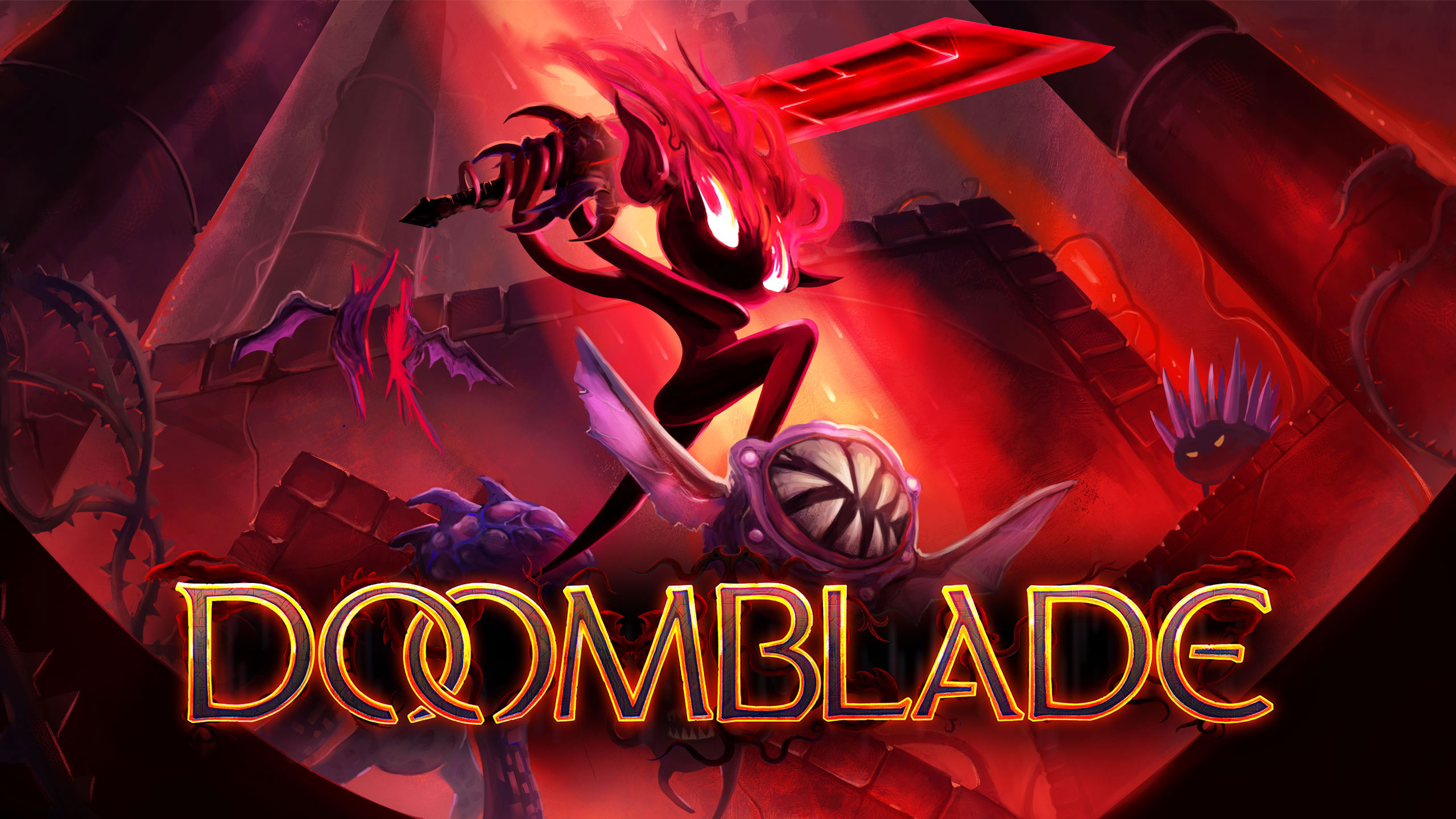Doomblade
Before I begin, I'd like to give a quick thanks to the devs and publisher for giving me an opportunity to review Doomblade. It was a very interesting experience for a Metroidvania-themed game. The game featured quite possibly the most unique mechanic in any 2D-platformer and when it works, Doomblade is at its finest. More often times than not, Doomblade runs into a brick wall, only to break through said wall and continue on its path of greatness. It's a flawed title but for every negative or puzzle that frustrated me, there was something else that awaited me which led me to give it praise.
The story centers around Gloom Girl, the last of a race of voidlings known as the Gloomfolk. She comes across a sentient dormant sword, Doomblade, and awakens its power on the promise that she will restore all of its power and enact revenge on the ones who sealed it. Thus, "Doom and Gloom" is literally in store for the hapless enemies who are at the mercy of the slicing and dicing that commences. It was here that most players, including myself, will realize that Doomblade is not a "run of the mill" "Metroidvania" as it plays more similarly to a twin-stick platformer.

Using the right analog stick to aim, Gloom Girl can lock on an enemy and dash her way in their direction, slicing them while also closing the gap. If there are multiple enemies, Gloom can continue to pounce on enemies in succession. This was similar to how movement felt in Berserk Boy, specifically with the default suit. While one is deeply rooted in Mega Man X, the Ori-like influence is also present with its soft art style and floating gameplay.
Doomblade also has impressive variety in its environments as Gloom traverses through the underworld. Dark and haunting forests quickly transition into barren industrial factories with automated machines that will fire at will. Its genre-bending knows no bounds as visions of bullet hell can be seen through trying to weave between projectiles, desperately looking for that enemy to latch on to until eventually you can't and you plummet to your death. Here was where the "honeymoon phase" began to end for me.

The idea of using enemies to traverse across the map is incredible in concept but difficult to execute as there are times when I would lock-on to an enemy seconds after targeting. This made certain rooms an absolute nightmare. An example of this is a room early on where you're fighting two, then four, then two more enemies that will deflect Gloom's attacks. The floor is literally the void and touching it will cause Gloom to lose a precious heart. Losing all hearts will send Gloom back to the save room the next room over, but unless the player knows how to handle this puzzle, it will be the cause of several retries.
This is a game that requires patience. At times I felt like rather than using a weapon like a game of Arkanoid like Tiny Thor, I became the Arkanoid ball myself. Staying in the air and reaching heights that would otherwise be unattainable and being rewarded with a useful item like a heart capsule are some of the game's biggest and best moments. Exploration has always been a strong suit for Metroidvania games and Doomblade is no different.

Unfortunately, while exploring, there will always be a room ten minutes in that will cause me to furrow my brow. The flow is sometimes inconsistent but when everything is working for Doomblade, it becomes a high-octane fast action platformer that speedrunners dream of. Give it time, don't get too frustrated, and you will see the beauty Doomblade offers underneath its rough exterior.
Doomblade is available on Steam.

